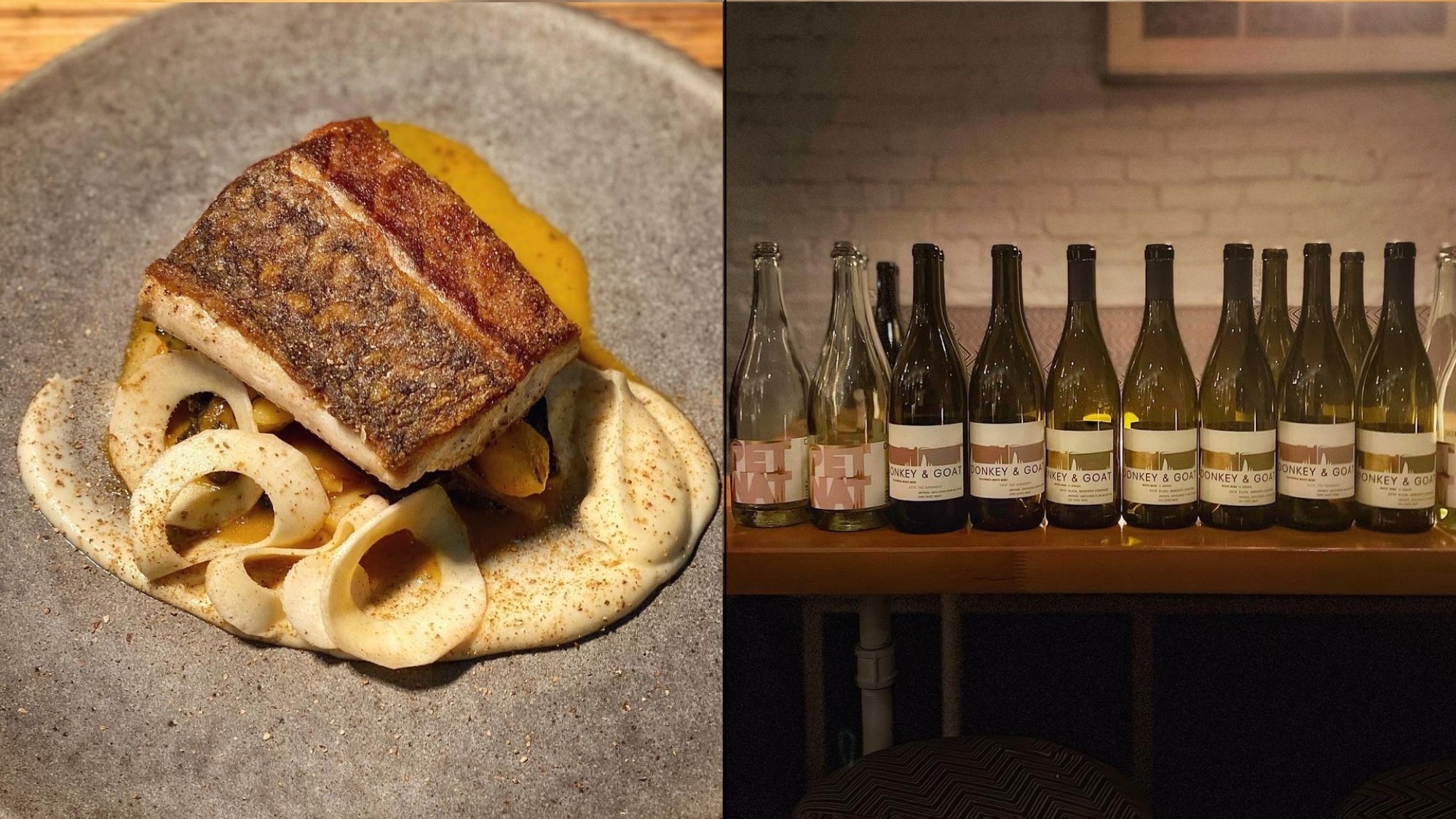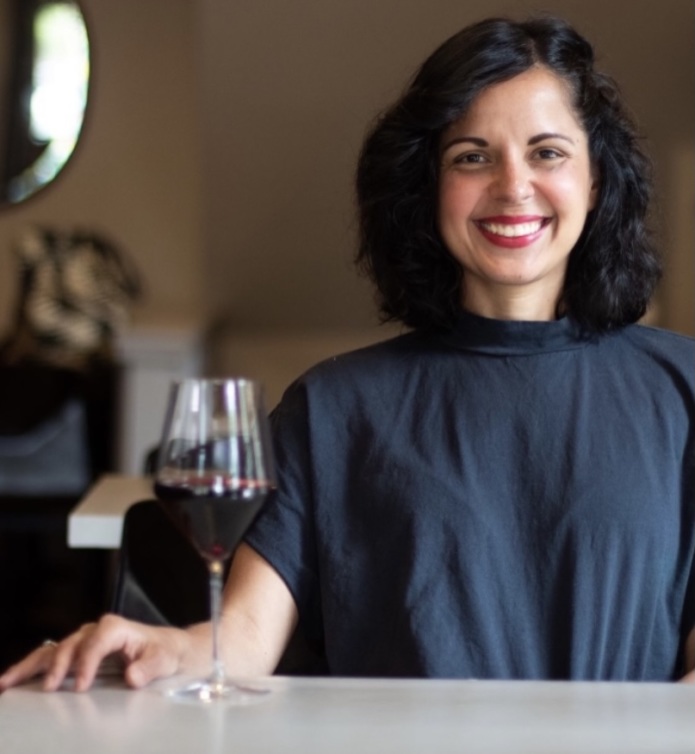
At Harlem’s Clay, A Spotlight on the Wines of Spain and Italy
One Great List is Resy’s occasional tribute to particularly noteworthy or unique wine programs around the country.
There’s a lot swirling around the corner of West 123rd Street and Manhattan Avenue in Harlem. Morningside Park’s a block to the west, the Apollo Theater’s three blocks north, Central Park is 12 blocks south and Columbia University is ever-present. There, smack dab in the middle of it all, is Clay.
Five years ago, wine director Gabriela Davogustto and her partners opened Clay in a storied space, one that until the late ’90s had been occupied by Perk’s Fine Cuisine, a legendary jazz club and restaurant. Clay would be a low-key gift to the neighborhood with a necessary burger, handmade pastas and gnocchi, duck confit on the menu, and a wine list distinct from anything above 110th Street.
Davogustto’s opening list was (and remains) anchored in small producers who emphasize looking out for the environment in their work (many “natural,” others not), and with the idea that by keeping mostly to approachably-priced bottles, she could introduce her regulars to a little bit of everything from the far corners of the wine world they’d never tasted, from the Canary Islands to Croatia. And it worked; the neighborhood wine folk traversed the city to sit at Clay’s long white marble bar to hear Davogustto speak energetically and warmly about these bottles.
Then, in the panic of the early days of the pandemic, Davogustto started to sell off all of the wine, liquidating the cellar as to-go bottles. She stopped buying, save for wines that she could pour by the glass. And with a pared-down crew and very long days, Clay eked through the last two years; it wasn’t until last fall that Davogustto resumed buying wine in earnest. Any sommelier will attest that once a wine list’s bones have been established, it’s neither all that easy nor financially prudent to change course, but with this nearly clean slate, Davogustto was able to get down to what she really cared about: wines from Spain and Italy — most falling between $70 and $120 a bottle.
This focus has resulted in a wine list that is an unparalleled view of the new guard in Spanish wine, namely producers who are relying on native varieties, spending all of their time in the vineyards and taking a lighter touch in the cellar.
“Spain is always a source of good surprises,” says Davogustto. She shines a particular light on in Galicia, Catalonia, and the Canary Islands — with little when it comes to better-known Rioja or Ribera del Duero. “Galicia offers so many different wines in such a small region, between Bierzo, Ribera Sacra, Rias Baixas. Historically we have just been drinking whites but now we are discovering the reds and they’re beautiful, still with very good value, price point for quality.” Davogustto is faithful to a number of winemakers, which means that should a guest find an affinity for the white wines of César Márquez or his uncle, esteemed winemaker Raúl Pérez, from Bierzo or mencía from DaTerra, say, it’s likely that there will be numerous bottlings available, encouraging serial drinking.

In the case of the Canaries, she has bottles from several of the islands, giving an expansive look at the diversity from one to the next, with producers like Envínate and Borja Perez Gonzalez. The wines of Victoria Torres Pecis are particular favorites. “Her wines are fabulous, they have so much soul,” says Davogustto’s. Pecis took over the incredible hundred-year-old vineyards that her father farmed until he died in 2015. These have found real traction at Clay, “When those wines come in, I get a good allocation because I have good supporters,” says Davogustto. “I even have customers that have even been there, to La Palma, to visit her because they loved her wines at the restaurant.” That said, this year, because of a volcanic eruption on the island, Pecis was unable to produce any wine. Her apostles will have to wait.
The Italian subset of the list is devoted to winemakers who are iconoclasts in their regions, but with slightly more established names and legacies than the Spaniards, such as Giovanna Morganti of Podere le Boncie and Elisabetta Foradori. It’s in Italy that Davogustto has found great depth in orange wines, which she lists intermingled with the rest of the whites. “In the end, they’re just white wine with skin contact,” she says. It’s these that she loves to pour with that duck confit, especially La Stoppa’s Ageno from Emilia Romagna or Santa Chiara from Paolo Bea, “but those wines go well with everything,” she says. “Oatmeal in the morning.”
Four Essential Wines From Clay’s Gabriela Davogustto
Borja Pérez Gonzalez Ignios Orígenes Marmajuelo ($119): In the town of La Guancha in northern Tenerife, one of the Canary Islands, fourth-generation winemaker Borja Perez works with indigenous grapes, like the white variety Marmajuelo, in tiny quantities. His Ignios Orígenes wines are single-vineyard bottlings of single grapes, which gives a very in-depth taste of something that we really never encounter elsewhere. These sorts of wine turn up over and over again on Davogustto’s list.
Daterra Viticultores ViCasas de Enriba ($85): Winemaker Laura Lorenzo has been making wine in Spain’s northeastern Galicia since she was 16 years old. “These are wines for people who love mencía,” says Davogustto of this vibrant 80/20 blend of mencia and white grape godello.
Familia Nin Ortiz Planetes de Nin “Garnatxes en Àmfora” ($115): “Located in Porrera, in Priorat, Ester Nin and her husband Carles Ortiz are devoted to biodynamics,” says Davogustto. Made entirely from garnacha, this bottling is aged in amphora for seven months. “This has the power of Priorat, but is also fresh and very, very elegant.”
Anima Mundi Xarel-lo ($93): Winemaker Agustí Torello Roca leads his family’s Catalonia winery AT Roca, where he makes largely sparkling wines, but Anima Mundi is his own personal project in Alt Penèdes. Made from 45 year-old xarel-lo vines, the grape most frequently used as a base for cava, this still version is aged in amphora for eight months and then sees 24 months in bottle before being released, resulting in a full-bodied, texture-driven wine with lemony perkiness.
That the wines should coalesce easily with menu was never up for discussion. Clay’s chef is Gustavo Lopez, who Davogustto met working in restaurants in 2003; they went to culinary school together. The two eventually married, but in the course of the pandemic divorced, remaining work partners, “and the relationship is so much better,” she says. Their mutual appreciation for the interplay of food and wine is apparent in both aspects of the menus. “I think 99% of the wines on the list are good pairings,” she says. “They are very round and they are not edgy. There is not one thing that’s too crazy — not too much acidity, not too much oak, not too much fruit. They won’t interfere with the food.”
Little by little, Davogustto’s list at Clay is gathering wines from places outside Spain and Italy, though very judiciously. “I was trying to get rid of inventory in 2020. In 2021, I was trying to focus on Spain and Italy,” says Davogustto. “And at the end of the year, I thought, we can go back to normal, let’s buy wine,” she says.
Megan Krigbaum writes about wine and all sorts of other drinks and travel for numerous publications. She’s currently a contributing editor for PUNCH, and formerly a wine editor at Food & Wine. Follow her on Twitter. Follow Resy, too.
Discover More

Stephen Satterfield's Corner Table























